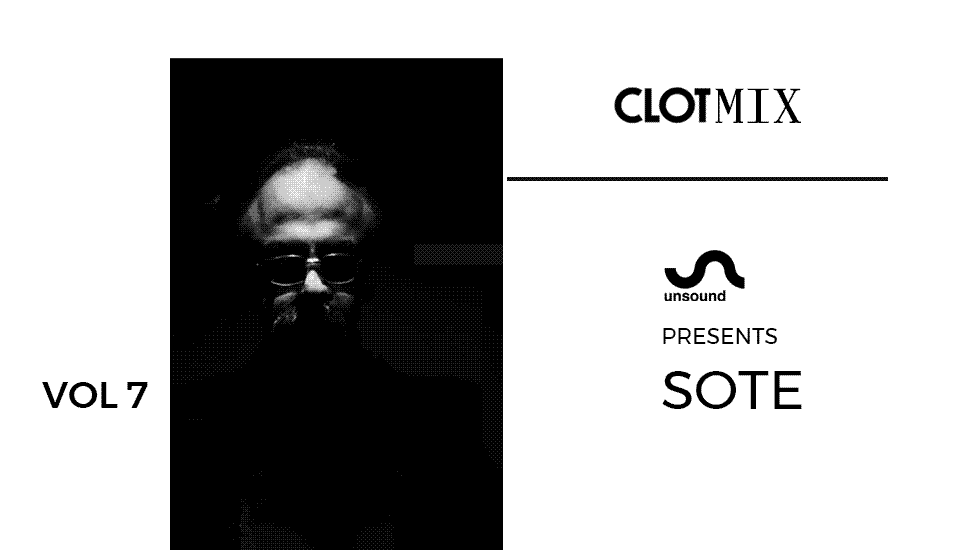Text by CLOT Magazine

For our 7th instalment, Sote (Ata Ebtekar), one of the most prominent current Iranian composers and sound artists has prepared a mix inspired by Unsound Krakow’s theme, SOLIDARITY. This theme will explore how music unites, both on a sonic level via its presence in a physical space or online, as well as culturally and politically, through scenes, collectives and movements.
Sote has produced two of the most exciting albums from the last years, Sacred Horror In Design (Opal Tapes, 2017) and the most recent, Parallel Persia (Diagonal, 2019). Albums where he closely collaborates with traditional musicians such as Arash Bolouri and Behrouz Pashaei. Currently based in Tehran, he is one of the motors behind the country’s vibrant and growing experimental art cultural scene.
For this mix, he explains that the fact of collaborating with talented musician friends such as Arash Bolouri, who plays the santour on Parallel Persia, Pouya Damadi, who plays the tar on Parallel Persia and Behrouz Pashaei who played the setar on Sacred Horror In Design has been critical to his electro-acoustic works in the past few years.
Since these electro-acoustic projects/albums have been about comradeship, he thought it would be interesting to go back about ten years when he collaborated with the pianist and composer Mazdak Khamda, who is a dear friend from his San Francisco Bay Area days: And I decided to mix our album ‘Sonic Within’ with additional spectral editing. I feel like this work was overlooked by the media upon its publication and felt right to reintroduce it one more time in this shape and form. I greatly enjoy the balance between the acoustic and the synthetic bits on this material. We also took this opportunity to discuss Parallel Persia and some aspects of his practice.
Your most recent album, Parallel Persia, blends acoustic string instruments and contemporary digital composition. How was the intellectual process behind its inception?
My goal with Parallel Persia was to achieve a sonic pallet that is particularly vivid where sound’s frequency contents act as hyper modulators on each other for a panoramic spectral soundscape. My way of gaining solid composition structures was to calibrate the synthetic and the acoustic with equal strength to build a euphonious complete whole. My Persian-influenced works have been mostly about deconstruction in the past two decades. However, with my last two albums (Sacred Horror In Design and Parallel Persia), I essentially avoided dismantlement and instead went for a harmonious relationship between opposite principles.
Your practice feels to have also a prominent socio-cultural angle. Is it something you consciously developed or that happens more naturally in the intrinsic nature of some components of your music?
I try to leave things as open as possible for the listener. However, social and cultural issues matter to me, and I love playing devilish games with various elements concerning these issues. So, Parallel Persia deals with the illusion and creation of an artificial hyperreal culture manipulated and controlled by an imperious agency somewhere within all galaxies. Like all realities, greed and arrogance channel the destruction of life. However, the path to havoc includes resistance via beauty, grace and symmetry. Snapshots of an apocryphal Iran are presented via sonic schematics for a synthetic “Meta-Persian” experience. This experience can be in our present-day life or maybe somewhere else somehow differently in a parallel world…
Acoustic music has an important role in your practice, as well as technology. How do you balance both? And how do you cope with technology (screen/digital) overload these days?
I look at all sounds equally. The outcome of the composition as a whole is the focal point for me. “Locked Timbre” is my poetic way of looking at sound, where all elements and tools unitedly become almost indistinguishable by being brilliant aural energy.
I love technology overload these days. We now have so many options to come up with such interesting soundscapes. The only downside is that my eyes suffer from looking at the computer screen for long hours every day.






